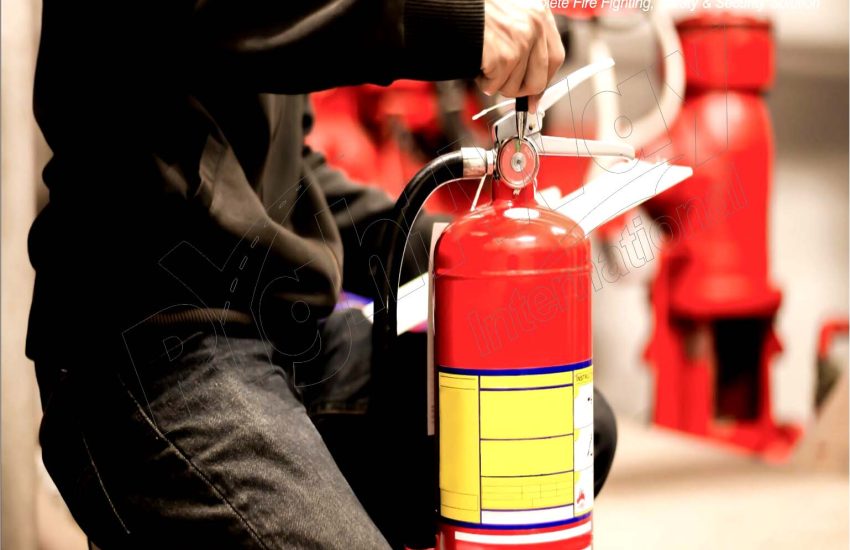Fire safety is essential in every home and workplace. Fire extinguishers play a key role in preventing small fires from becoming major disasters. However, simply having one is not enough. Regular fire extinguisher servicing and inspection ensure that the equipment works when you need it most. In this article, we will explain why fire extinguisher servicing and inspection are important, how often they should be done, and best practices for maintaining fire safety.
What is Fire Extinguisher Servicing and Inspection?
Fire extinguisher servicing involves checking and maintaining extinguishers to keep them operational and effective in emergencies. This includes inspecting components like the pressure gauge, nozzle, seal, and cylinder for damage or expiration.
Fire extinguisher inspection is a routine process that verifies whether the extinguisher is in good working condition and easy to access. Inspections typically happen monthly, while full servicing takes place annually or after use.
Why Are Fire Extinguisher Servicing and Inspection Important?
- Ensures Readiness: A well-maintained extinguisher is crucial in a fire emergency. Without proper servicing, it may fail to function when needed most.
- Compliance with Regulations: Many local and national fire safety laws require regular inspection and servicing of fire extinguishers. Failing to comply can result in fines or legal consequences.
- Extends Lifespan: Regular maintenance can extend your extinguisher’s lifespan. Servicing identifies issues early, preventing costly replacements.
- Safety Assurance: A faulty extinguisher can be dangerous in an emergency. Regular servicing and inspection ensure that your equipment is safe and reliable.
What Does Fire Extinguisher Servicing Involve?
Fire extinguisher servicing is more thorough than a basic inspection. A technician will:
- Inspect for Damage: Look for dents, rust, or corrosion that could affect functionality.
- Check the Pressure Gauge: Ensure the pressure is within the optimal range. Low pressure may prevent the extinguisher from working.
- Examine the Seal and Pin: Make sure the tamper seal and safety pin are intact to avoid accidental discharge.
- Test the Hose and Nozzle: Ensure that the hose and nozzle are clear of blockages and free from cracks or damage.
- Check the Weight: Verify the extinguisher’s weight to confirm it has the right amount of extinguishing agent and is not leaking.
- Recharge or Refill: If the extinguisher has been used or the pressure is low, it will need to be recharged or refilled.
- Label and Document: After servicing, the technician will place a new service tag and record the date and any repairs.
How Often Should Fire Extinguishers Be Inspected and Serviced?
Fire extinguisher inspections should happen at least once a month. This can be done by a trained individual. Monthly checks include:
- Ensuring the extinguisher is in its designated location and accessible.
- Checking that the pressure gauge is in the green zone.
- Looking for signs of damage or tampering.
- Verifying that the tamper seal and pin are intact.
Fire extinguisher servicing should occur at least once a year. A professional technician will conduct the full servicing, including recharging, refilling, and replacing any damaged components. If the extinguisher is used, recharge it immediately, regardless of how much was discharged.
How to Choose a Fire Extinguisher Servicing Company
When selecting a fire extinguisher service provider, consider the following:
- Certified Technicians: Choose a company with certified technicians who know fire safety standards.
- Comprehensive Services: Look for a provider that offers full inspection, servicing, recharging, and repair services, along with documentation for compliance.
- Reputation and Experience: Choose a provider with a strong reputation and experience in the field.
- Emergency Response: Ensure the company can quickly refill or recharge your extinguisher if it’s used.
- Competitive Pricing: Compare prices, but focus on quality service over the lowest cost.
Fire Extinguisher Types and Their Inspection Requirements
Different types of extinguishers require different servicing processes:
- ABC Fire Extinguishers (Multipurpose Dry Chemical): Used for Class A (combustibles), Class B (flammable liquids), and Class C (electrical fires). These require routine inspection and annual servicing.
- CO2 Fire Extinguishers: Often used for electrical fires and Class B fires, these need to be weighed during servicing to ensure adequate CO2 levels.
- Water and Foam Fire Extinguishers: Used for Class A fires (combustible materials), these require regular checks of the hose, nozzle, and pressure.
- Wet Chemical Fire Extinguishers: Used for kitchen fires (e.g., oils and fats), these need annual servicing to check for chemical agent degradation.
Conclusion
Regular Fire Extinguisher Servicing & Inspection are essential for maintaining fire safety. By ensuring that fire extinguishers are functional and ready, you protect your property, employees, and loved ones from the dangers of fire. Whether you’re a business owner, property manager, or homeowner, staying on top of maintenance is vital to meet legal requirements and guarantee safety in an emergency.
Don’t wait until a fire strikes—schedule your fire extinguisher inspection and servicing today. Ensure your extinguishers are in optimal condition when you need them most.


